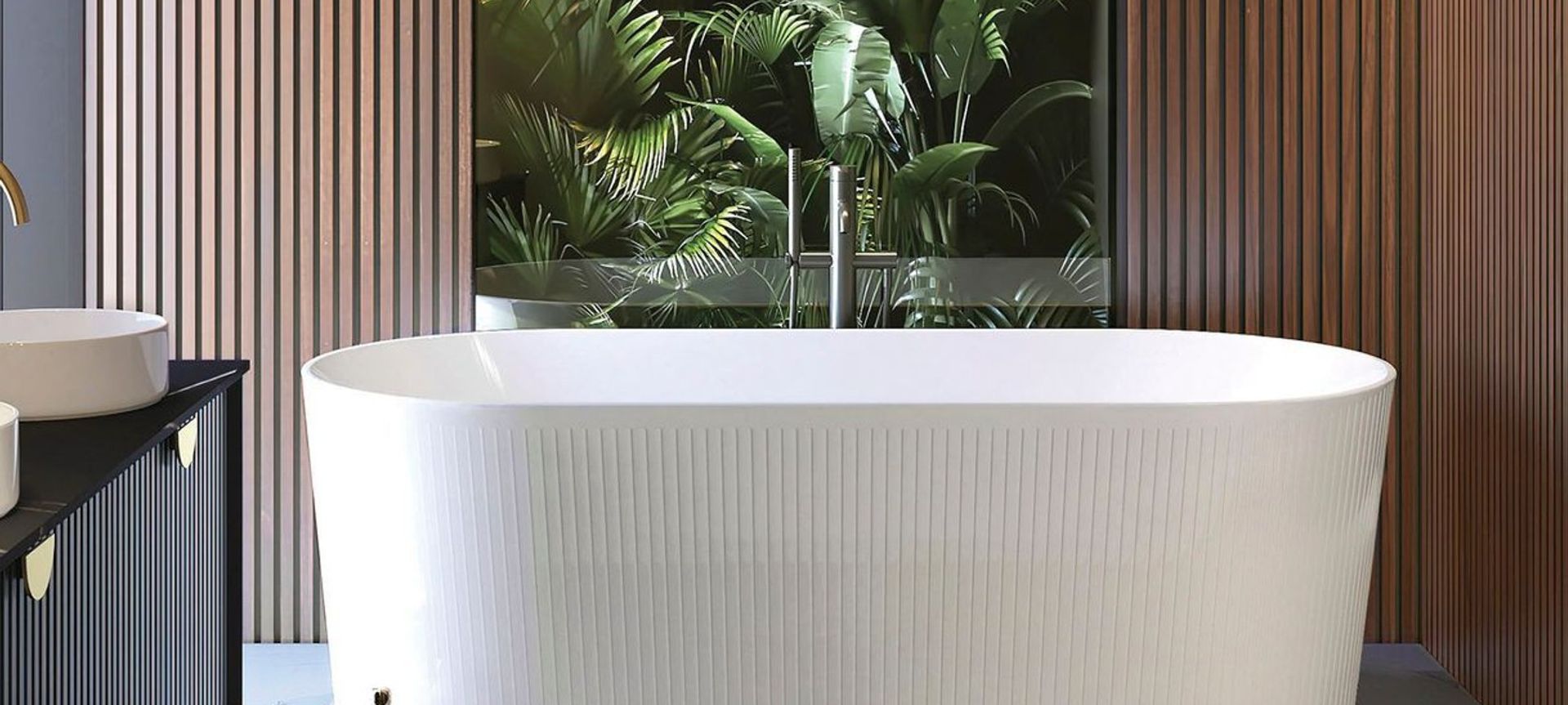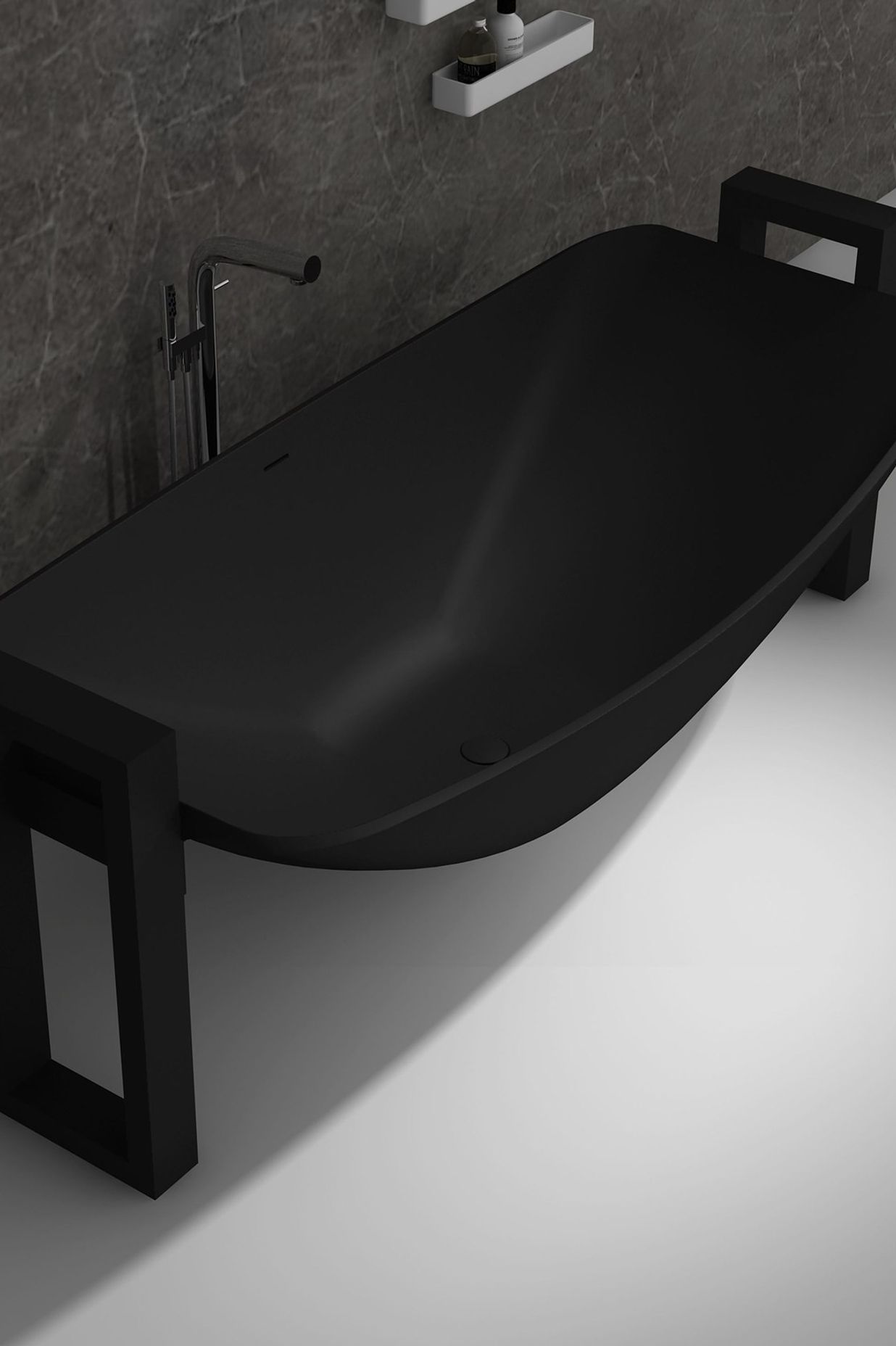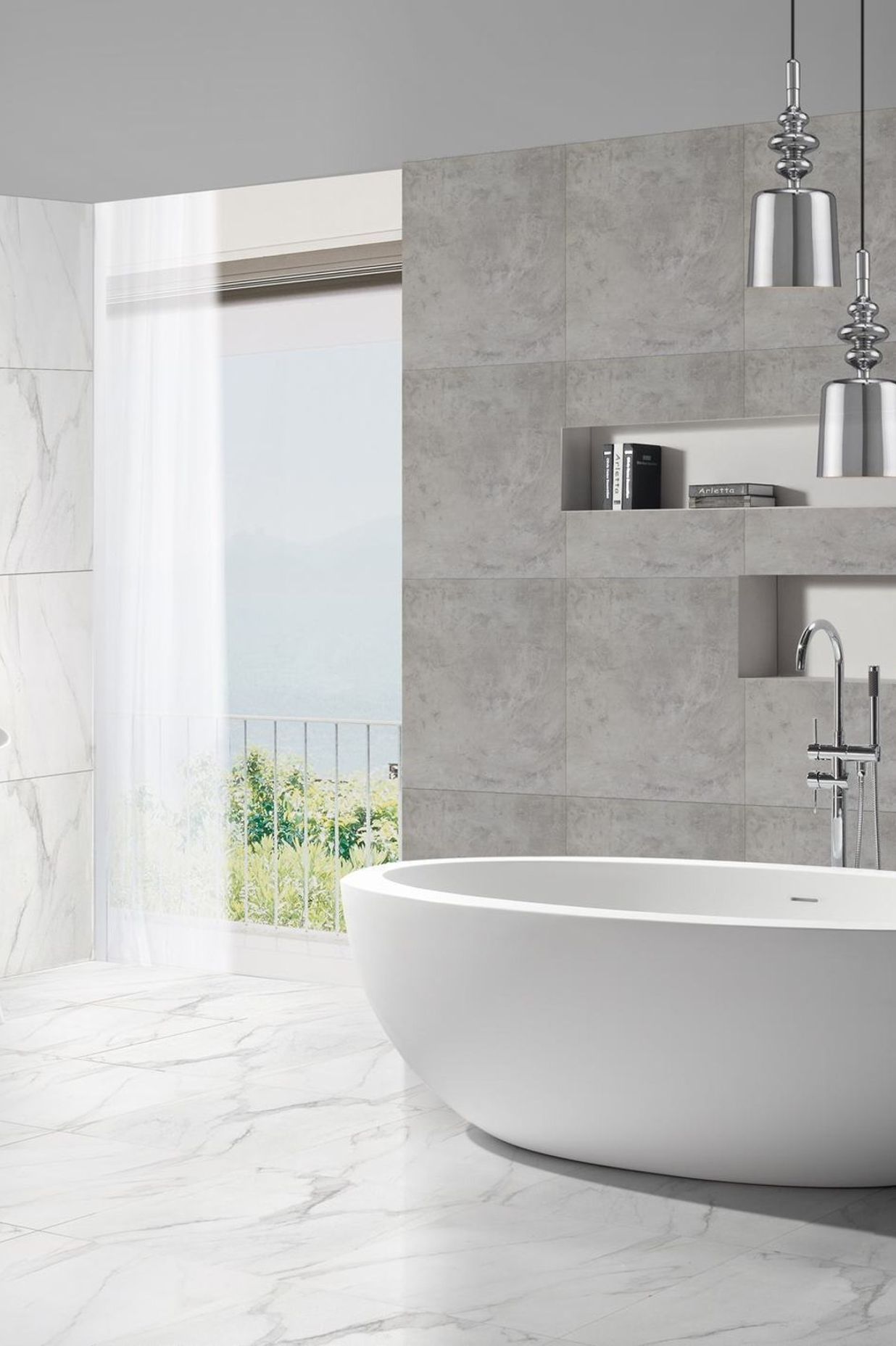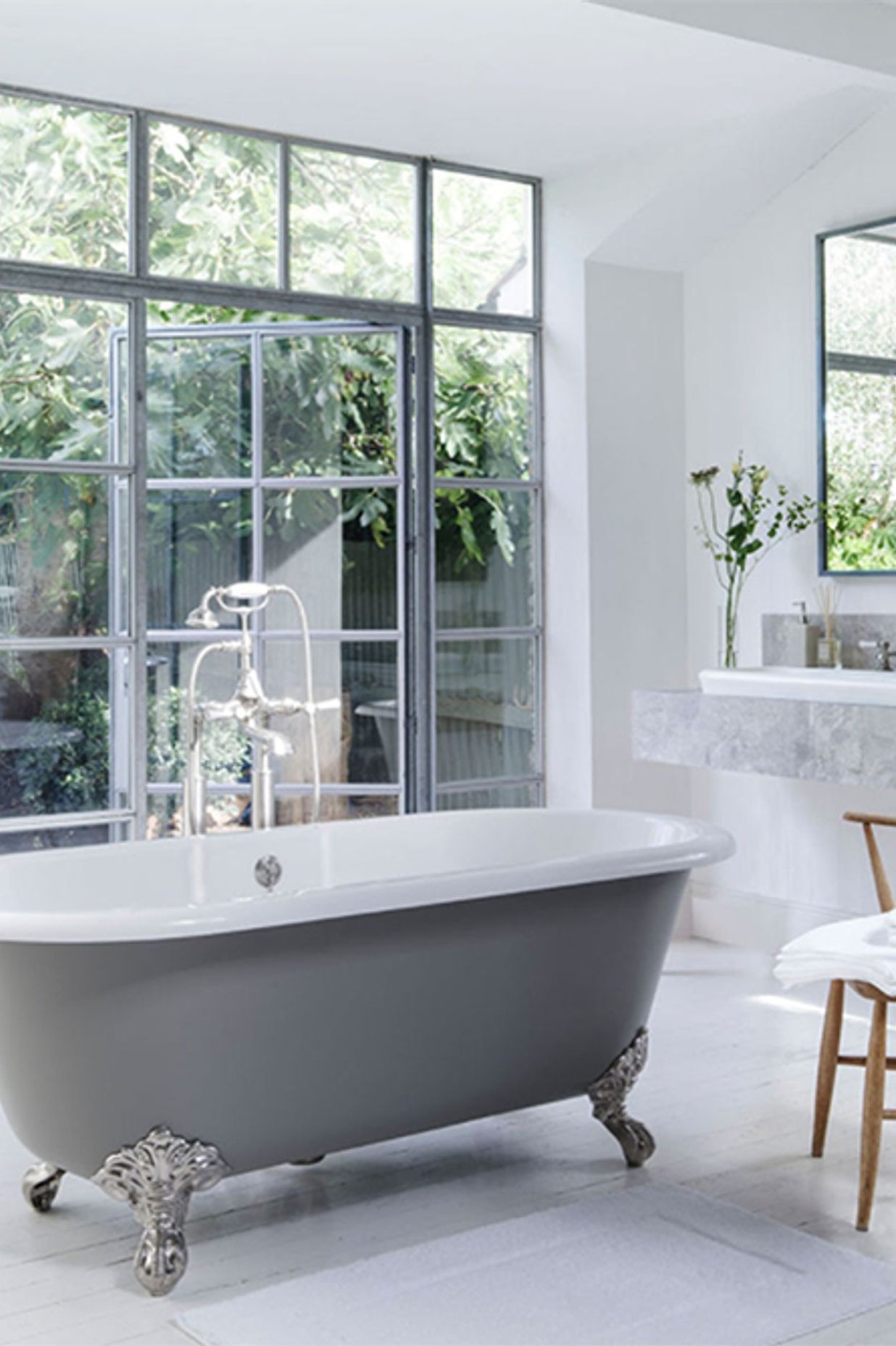10 Popular Bathtub Materials: Pros and Cons

The types of bathroom materials you choose for your bathtub will be influenced by many things. Your budget, aesthetic preferences, feel and any other unique qualities that may be of interest. As with materials of any kind, there are both advantages and disadvantages to each. Some of these will be more relevant to some than others which is why it's so important to see what these are so you can know exactly what you’re getting.

1. Acrylic baths
Acrylic tubs come from a compound of chemicals, resins, and fillers. Dye gives them the colour and appearance desired. They are then moulded into a bathtub shape and reinforced with fibreglass.
Acrylic bath pros
- Non-porous so they won't absorb water
- Good heat retention from the water temperature
- Repels mildew
- Will not stain easily
- Lightweight
Acrylic bath cons
- They are flexible, so can bow when stood upon
- Acrylic can scratch easily
- A higher cost bracket
2. Ceramic baths
Ceramic bathtubs are made from a mix of tiles. Clay is heated to very high temperatures and then used to mould them into shape. When it hardens a durable bathtub remains.
Ceramic bath pros
- Can be lower in price
- A wide range of size options including customisable
Ceramic bath cons
- Requires maintenance of the grout holding the tiles together
- Tiles provide a bumpy surface to rest upon

3. Fibreglass baths
Many people will tell you that fibreglass tubs are the best all-around option. It is a type of reinforced plastic. This is then moulded into a bathtub shape and then coated with a gel resin.
Fibreglass bath pros
- Low cost
- Lightweight
- Easy to install
- Easy to clean
Fibreglass bath cons
- Slightly more brittle than other options and can crack
- Absorbs water
- Can lose colour and lustre over time
- Flexible so can bend when it is stood on

4. Porcelain enamelled steel baths
Porcelain enamelled steel is one of the most common bathtub materials in Australia. Its base is often made of steel sheeting or cast iron. This is then coated with porcelain enamel, created by fusing powdered glass to a substrate at high temperatures.
Despite sounding expensive and antiquated, they are a relatively cheap addition to your bathroom. It is heavier than acrylic and fibreglass though lighter than cast iron alone.
Porcelain baths pros
- Affordable
- Lightweight
- Durable
- Easy to clean
Porcelain baths cons
- Porcelain can chip if items are dropped on it and will rust if the steel is exposed
- Colour and shape options are sometimes limited
- Does not retain heat as well as some other materials
- Slippery surface when wet
Related article: 15 small bathroom ideas on a budget

5. Natural stone baths
Natural stone can get confused with stone resin, which is a different material altogether. Resin comes from crushed stone, whereas this tub gets carved from pure rock. Granite, marble, travertine and sandstone are often used in their construction.
These types of bathtub materials look outstanding, particularly if they use materials also visible elsewhere in the house or local environment. However, like their weighty characteristics, they also carry a heavy price tag that can quickly lap up your budget.
Natural stone baths pros
- Very long lifespan and highly durable
- Holds in heat
- Resistant to chips
- Has a high-end, luxurious appearance
Natural stone baths cons
- Very expensive
- Extremely heavy, so most floors will need reinforcing
6. Cast iron baths
Cast iron is a classic material for freestanding bathtubs. It is extremely durable but very heavy.
The manufacturing process involves pouring molten iron into a cast. It is then moulded into the desired shape and smoothed out. A thick enamel is then added to the surface.
This is probably one of the most durable options available. However, the weight and price tag can put people off getting one installed.
Cast iron bath pros
- Extremely durable and long-lasting
- Comes in a wide variety of styles and colours
- Scratch and chip resistant
- Classic look
- Can be resurfaced
Cast Iron Cons
- Extremely heavy, meaning extra support may be required
- Tough to install because of the weight
- One of the more expensive options

7. Copper baths
A copper tub is a real statement piece for your bathroom. Made from hammering multiple sheets of pure copper into a bathtub shape, it has a Victorian industrial aesthetic that catches the eye. You could use it in a cool loft apartment or to get a rustic, farmhouse feel.
Copper bathtub pros
- A unique, eye-catching look
- Keeps heat, especially when it is double-walled
- Resistant to mildew and mould
- Easy to clean
Copper bathtub cons
- Expensive options
- Very heavy so may require support
Related article: The top bathroom trends for 2022
8. Wood baths
Wood tubs tend to be larger than others, so you need a lot of room. As it is easy to work with it can be shaped and customised to your wishes. There are also a lot of different finishes and fibreglass coatings that can maintain its beauty.
Wood bath pros
- Statement look
- Environmentally friendly
- Retains heat well
- It lasts a long time
Wood bath cons
- Expensive option
- Requires a lot of maintenance
9. Stainless steel baths
Steel bathtubs have a very modern look, combined with affordability. They're much lighter than cast iron options, maintain heat and are very durable. This means you don't need a lot of the reinforcement which you do with heavier tubs.
Stainless steel bath pros
- Lightweight option
- Warms quickly
- Very durable
Stainless steel bath cons
- Can be unstable and may need fastening in place
- Does not have good heat retention once the water has left the bathtub
- Can be limited in design choices and colours

10. Cultured marble baths
Cultured marble has a very refined look with a classical feel. It is made from crushed limestone and resin. This then has a gel coating to strengthen it.
Cultured marble bath pros
- A wide range of styles, sizes and colour options
- Durable and longer-lasting than fibreglass
- Retains heat well
Cultured marble bath cons
- An expensive option
- Can lack availability
- Heavy
- Will discolour if not well maintained
Related article: Tips for your luxury bathroom renovation

Choosing the right type of bathtub material
Now that you know the different types of bathtub materials and what their unique characteristics are, you’ll be able to make an informed decision when the time comes. There are of course other considerations to factor in as well but your choice of material is a crucial one and will quickly help narrow down that shortlist so you can get your new bath in sooner rather than later.
